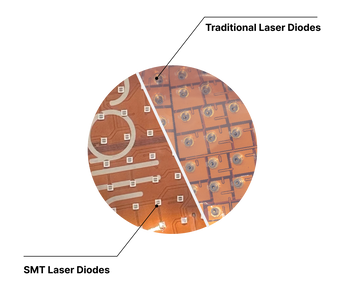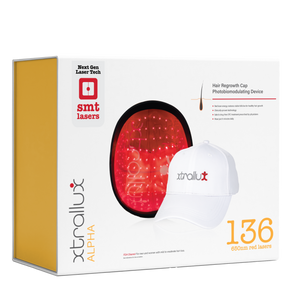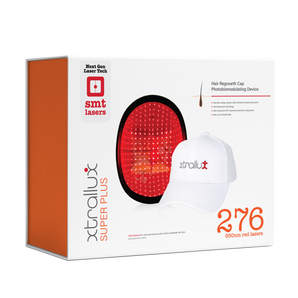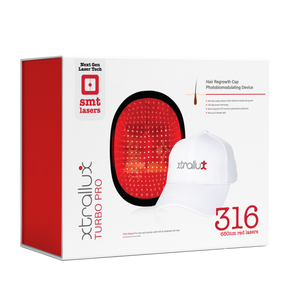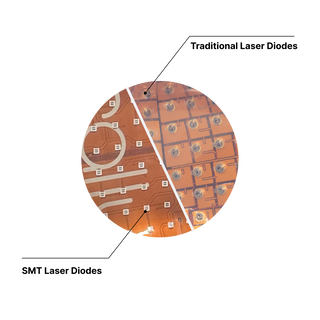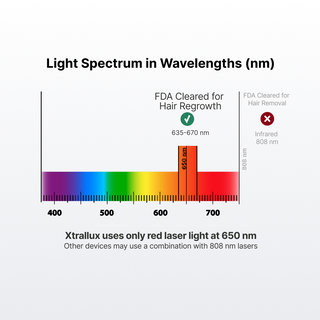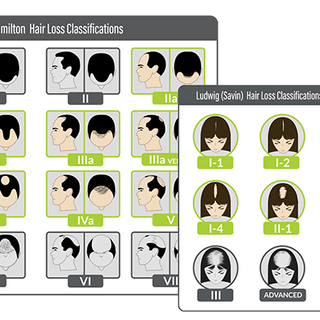In the evolving field of low-level laser therapy (LLLT), progress often happens quietly—through engineering refinements rather than flashy marketing claims. One such advancement, Surface-Mount Technology (SMT), is transforming how energy is delivered in medical and wellness devices, including those designed for hair restoration.
The Engineering Behind the Shift
For years, most laser therapy devices relied on through-hole diodes—a design in which each laser component is inserted and soldered through a circuit board. While effective, this method limits precision, adds bulk, and can create slight inconsistencies in how light energy reaches the target area.
SMT changes that equation. By mounting each laser diode directly onto the surface of the circuit board, engineers can position lasers with far greater accuracy, reduce mechanical stress points, and achieve a slimmer overall profile. The result is a system capable of delivering more uniform, stable, and focused energy across the treatment zone.
Why Precision Matters
Laser therapy for hair health depends on consistency—both in wavelength and delivery. Variations in beam intensity or spacing can reduce how effectively light interacts with follicles. SMT’s tighter design tolerances allow:
- Even coverage: Light is distributed uniformly across the scalp, reducing under-treated areas.
- Higher energy density: Each laser outputs reliable concentrated red light, more consistently, with minimal loss as it travels from source to skin.
- Improved durability: Fewer physical connections mean fewer points of wear or failure over time.
- Greater comfort: A thinner, lighter assembly makes the device more ergonomic for everyday use.
A Clearer Standard for Light Sources
Another growing conversation in the laser therapy field involves the use of LEDs versus medical-grade lasers. Clinical studies reviewed by the U.S. Food and Drug Administration for devices cleared to treat androgenetic alopecia have consistently involved red laser light—typically within the 635–670 nm wavelength range—rather than LEDs alone.
That distinction matters: LEDs disperse as they travel, losing intensity before reaching the scalp. Lasers, by contrast, maintain coherence, meaning their energy remains focused and targeted. SMT takes that precision one step further by improving how those lasers are positioned and directed.
VCSEL Lasers: The Next Evolution
SMT has also made it possible to integrate Vertical-Cavity Surface-Emitting Lasers (VCSELs), a newer generation of laser diode known for its compact design and efficient output. VCSELs emit light perpendicular to the surface, which allows for denser, more stable arrays—an ideal match for scalp therapy applications where uniformity and comfort are priorities.

Where Xtrallux Fits In
The only device offering this technology today, Xtrallux has implemented SMT and VCSEL integration across its next-generation laser caps. Every diode in these systems is a true 650 nm red laser—the same wavelength cleared by the FDA for at-home devices addressing androgenetic alopecia
By combining SMT precision with refined battery performance, lighter design, and improved durability, Xtrallux’s systems exemplify how engineering improvements can enhance both usability and reliability—without altering the intended therapeutic purpose.
A Step Forward in Everyday Innovation
SMT doesn’t change what laser therapy does; it changes how effectively it can be delivered. It represents a quiet but meaningful step forward—one that makes devices sleeker, sturdier, and more consistent.
And in a category where consistency is everything, that evolution may matter most of all.
